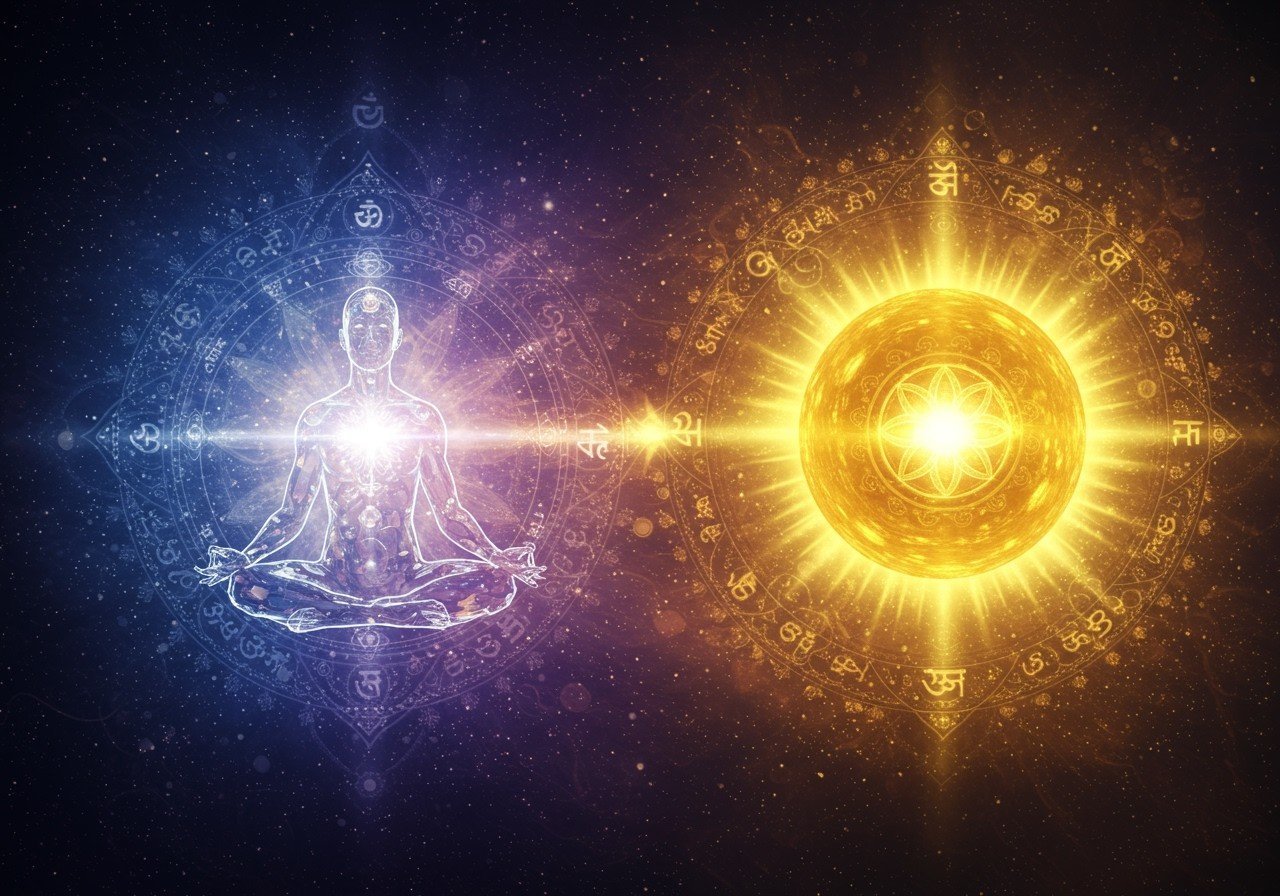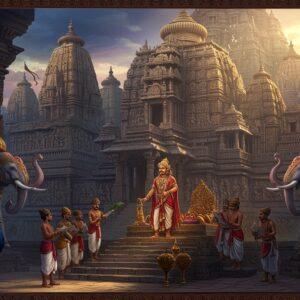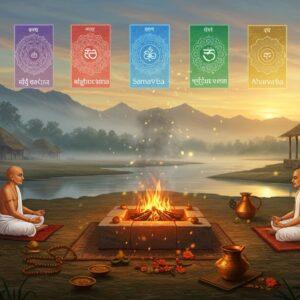
The concepts of Brahman and Atman are central to Hindu philosophy, particularly within Vedanta schools. These concepts explore the nature of reality, the self, and the relationship between the individual and the universe. Let’s delve into their meanings and explore their profound interconnection.
Understanding Brahman: The Ultimate Reality
Brahman is considered the ultimate reality, the absolute, all-encompassing, and unchanging foundation of the universe. It is often described as infinite, eternal, and pure consciousness, the source of all existence. Brahman is both immanent, present in everything, and transcendent, beyond human comprehension. The Vedas and Upanishads, ancient Hindu scriptures, describe Brahman as the ground of being from which all things arise and to which they return. Think of it as the cosmic principle that governs the entire universe.
Brahman has two aspects: Nirguna Brahman (without attributes) and Saguna Brahman (with attributes). Nirguna Brahman is abstract, beyond description, and free from any qualities. Saguna Brahman, on the other hand, is conceived with attributes and can be worshipped in various forms. Different Indian philosophies offer unique perspectives on Brahman, enriching the understanding of this complex concept. Through practices like meditation and devotion, individuals can deepen their connection with Brahman.
Exploring Atman: The Inner Self
Atman refers to the individual self, the essence or soul within each living being. It is the true nature of an individual, distinct from the body and mind. Atman is considered eternal and unchanging, the core of one’s identity. The Upanishads teach that the Atman is not separate from Brahman but rather a part of it, as expressed in the famous phrase “Tat Tvam Asi” (That Thou Art). This emphasizes the inherent divinity within each individual.
Understanding the distinction between the empirical self (the ego) and the true self (Atman) is crucial in Hindu philosophy. Self-realization, the awareness of one’s true nature as Atman, is considered the path to liberation (moksha). Different schools of thought within Hinduism, such as Dvaita and Vishishtadvaita, offer varied interpretations of Atman, providing a rich tapestry of perspectives on the nature of the self.
Brahman and Atman: The Interconnection
The relationship between Brahman and Atman is a core concept in Hindu philosophy, particularly within Advaita Vedanta. This school of thought emphasizes the non-duality of Brahman and Atman, asserting that they are ultimately one and the same. The perceived separation is due to ignorance (Avidya) of one’s true nature. Recognizing this unity is considered essential for spiritual enlightenment. Find your Guru: Guidance for Your Spiritual Journey can help you navigate this path.
The analogy of the wave and the ocean is often used to illustrate the relationship between Atman and Brahman. The wave, like the individual Atman, appears separate but is ultimately part of the ocean, which represents Brahman. This highlights the idea that individual consciousness is a manifestation of universal consciousness. The core teaching “Tat Tvam Asi” (“You are that”) encapsulates this essential unity. Different perspectives exist within Hindu philosophy regarding this relationship, with some schools, like Dvaita Vedanta, maintaining a distinction between Brahman and Atman. Explore Hindu Scriptures: A Detailed Exploration to gain a deeper understanding of these diverse perspectives.
Practical Implications: Living the Wisdom
Understanding the concepts of Brahman and Atman has profound implications for daily life and spiritual practice. Realizing one’s true nature as Atman fosters a sense of oneness with all beings, cultivating compassion and empathy. This understanding can transform our relationships and our interactions with the world around us. Incorporating practices like meditation, devotion, and self-inquiry can help embody these teachings. Bhajans and Kirtans: A Deep Dive into Rich Traditions can enrich your spiritual journey.
These ancient teachings offer valuable insights for navigating the challenges of modern life. By embracing the wisdom of Brahman and Atman, we can embark on a journey of self-discovery, spiritual growth, and a deeper connection with the universe. Connecting with your Inner Self: A Hindu Philosophy Guide can help you begin this transformative process.
Supporting Your Spiritual Journey with Poojn.in
Poojn.in offers a wide range of authentic puja items and spiritual tools to support your exploration of these profound concepts. From diya and alta for traditional rituals to meditation mats and murtis, we provide carefully curated products to enhance your spiritual practice. Explore our collection today and deepen your connection with the divine.


